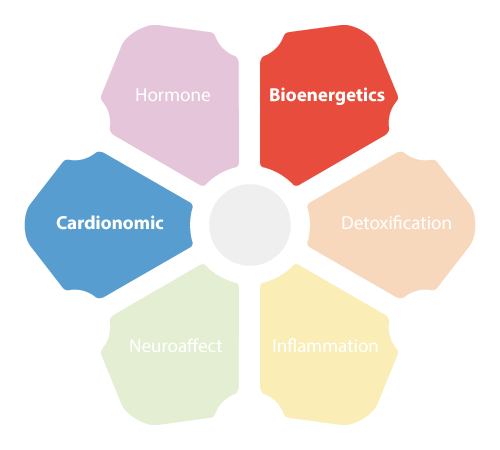 Not all cardio is created equal. To choose the correct form for you, you must take a few factors into consideration. Think about your goals, your motivation factor, and your commitment to your workout. Ask yourself the following questions: Are you only looking to maintain your health, or are you looking for weight loss, or muscle toning and building? You must make sure you are following the right exercise regimen for your goals. High intensity interval training could be the answer you are looking for, if you are healthy enough for the stress it puts on your body.
Not all cardio is created equal. To choose the correct form for you, you must take a few factors into consideration. Think about your goals, your motivation factor, and your commitment to your workout. Ask yourself the following questions: Are you only looking to maintain your health, or are you looking for weight loss, or muscle toning and building? You must make sure you are following the right exercise regimen for your goals. High intensity interval training could be the answer you are looking for, if you are healthy enough for the stress it puts on your body.
We’ve all heard that we should exercise, but why? Aside from the most popular reasons such as weight loss and heart health, there are many other benefits from engaging in a regular exercise regimen. Along with diet and sleep, exercise plays an important role in overall wellness. Exercise can:
There are many forms of exercise to engage in to reap all these benefits. However, a great deal of attention has recently been given to high intensity interval training due to its effectiveness and efficiency.
High intensity interval training, or HIIT, has increased in popularity due to the small time it requires to complete along with the large effects it has on the body. Results from studies suggest that high intensity interval training could be superior in some cases to more conventional methods of exercise as it truly optimizes the time in which people spend exercising, which is one of the main reasons so many people refrain from engaging in physical activity to begin with.
Three 10 minute sessions a week that include 3-20 second segments of high intensity can benefit muscle oxidation and cardiometabolic health as much as conventional methods can. High intensity interval training has become of great interest in the fitness world.
High intensity interval training has been developed with a lot of science and research to back it up. One recent study was conducted which compared conventional exercise to HIIT. One set of participants were required to complete steady-state cardio for 30 minutes three times a week, while the other group was asked to complete 20 minutes of HIIT three times a week. Results where astonishing. Although both resulted in weight loss, the high intensity interval training group showed a 2% reduction in body fat, while the steady-state group only lost .3%. The HIIT participants also showed almost two pounds of muscle gain, while the steady-state group lost a pound of muscle weight.
Another study was recently released in the Journal of Obesity that found 12 weeks of high intensity interval training reduced total abdominal trunk and visceral fat, and increased muscle mass and aerobic power. It is also interesting to note that the subjects diets remained the same with no changes before or during the trials.
 There are a variety of different types of high intensity interval training methods.
There are a variety of different types of high intensity interval training methods.
One of the most popular is the Tabata, named after the Japanese HIIT researcher Izumi Tabata. In this method, an activity is performed at high intensity for 20 seconds, resting for 10 seconds, then repeating this sequence on and off for a total of four minutes. This was found to be equivalent in VO2 as 45 minutes of long, slow cardio performed four times a week. VO2 is the best indicator of a person's cardiovascular fitness and aerobic endurance. This gives Tabata a great advantage over older, conventional methods of exercise. Exercise enthusiasts can trade in their long, slow times on the treadmill for short, fast sprints.
Another method was developed by Dr. Johnathan Little and Martin Gibala in 2009. It calls for 60 seconds of a high-intensity workout, followed by 75 seconds of low intensity, for a total of 12 cycles, or 27 minutes, up to 3 times a week. A 3-minute warm-up prior to beginning this regiment is suggested. The Little Method works best for intermediate fitness levels.
Turbulence Training, developed by researcher Craig Ballantyne, is best for those who have longer segments of time to train and are looking for strength training. It begins with a 5-minute warm-up followed by an eight-rep set of a weightlifting movement, then one minute of cardio such as mountain climbers. This pattern is continued for 45 minutes until a full-body work out has been completed.
Some of the most popular exercises that are classified as a high-intensity movement include:
If you are planning on doing high intensity interval training, find the movements that you like best to include in your workouts.
Pushing your body to its limit for a certain amount of time in a managed fashion is ok. However, if the movements are uncomfortable or painful, check with a professional to make sure you are completing the movements correctly. Be open to trying different movements to find what works best for you.
For the right person, in the right body, and if practiced correctly, high intensity interval training is a safe method of exercising. However, it is not for everyone. Excessive aerobic activity has been shown to negatively affect the body in many ways. Too much exercise can:
This is evidence that people should be smart about their cardio choices, as too much exercise or incorrect processes can be detrimental to health and fitness goals. There is sufficient evidence to suggest that interval training for over 30 minutes can be detrimental to muscle gain.
HIIT should be done only for short durations. A great cardio regimen to accommodate this program on off days can be low impact walking. Along with increasing health and decreasing stress, it helps the muscles and joints stay healthy and active. Even 15 to 20 minutes of walking on HIIT off days can do enough to keep you in great shape.
 Your heart is part of six circuits in the body in the NeuroEndoMetabolic Stress Response System. All six work in unison to regulate how the body handles stressors such as that brought on by exercise. The exercise regimen that a person takes on must be a healthy choice. If the regimen causes too much stress, or if your body is already suffering from other ailments, a systematic breakdown can take place. When an adrenal dysfunction and a cortisol imbalance occur, metabolic changes can result in exercise intolerance and fatigue. The body’s ability to provide energy for exercise can reach a point where it is operating inefficiently.
Your heart is part of six circuits in the body in the NeuroEndoMetabolic Stress Response System. All six work in unison to regulate how the body handles stressors such as that brought on by exercise. The exercise regimen that a person takes on must be a healthy choice. If the regimen causes too much stress, or if your body is already suffering from other ailments, a systematic breakdown can take place. When an adrenal dysfunction and a cortisol imbalance occur, metabolic changes can result in exercise intolerance and fatigue. The body’s ability to provide energy for exercise can reach a point where it is operating inefficiently.
Overexertion from exercise can cause a chain reaction of problems which is why regimens should always be performed with caution, and those suffering from ailments should consult with fitness experts or health coaches.
One of the first symptoms of an overly stressed body is adrenal dysfunction, and what is known as adrenal fatigue. When a body gets to this state, exercise must be done with caution. Depending on what stage adrenal fatigue is in, a health care provider may advise against it. It is especially important for adrenal fatigue sufferers to seek advice on their exercise regimen. It is often a double-edged sword, as exercise is good for the body, but it can also be detrimental during adrenal fatigue recovery.
It is important to remember that even if exercise programs are set up to be effective and time efficient such as the high intensity interval training programs are designed to be, if they are not perceived as enjoyable, they can cause unneeded stress to the body. HIIT forces the body to put out more cortisol and adrenaline, which can be problematic. In addition, the likelihood that an exercise program will be sustained long enough to begin healthy outcomes decreases if the adrenals are stressed. The risk of adrenal crashes incrementally increases with the greater the intensity of HIIT. If you are weak or in adrenal fatigue recovery, start with Adrenal Yoga to prepare your body before you embark on HIIT. Thus, while HIIT is good for some, those with advanced adrenal fatigue must proceed with great care.
Although high intensity interval training is an efficient and effective way to exercise, it does require extremely intense workout segments. If you have more advanced AFS, this level of intensity may be too much for your body. It could be best to start with something gentler, and talk with your doctor before trying HIIT.